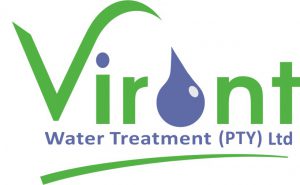Green Cleaning Myths; Biodegradable, Bacteria, Enzymes and Microbes
Ignorance, as they say, is bliss – except when it involves “green” practices that are
merely harming the environment in a different way, or having no effect at all. As the
popularity of “eco-friendly” products continues to rise, manufactures and
distributors are attempting to differentiate their products through the use of
inaccurate statements, skewed facts and downright myths. In this instance,
knowledge truly is power – especially when it comes to reading between the
marketing material lines to determine whether or not green cleaning products are
truly green.
Usually, companies that sell “green” cleaning products position these items within
one of four categories; biodegradable products, enzymatic products, bacterial
products (biological), or essential microorganism products (microbes and their
metabolites).
While biodegradable cleaning chemicals sound like a perfect solution, the standard
measure of their biodegradability can only be achieved in the laboratory where
perfect conditions are supplied. These perfect conditions are pH neutrality and
sufficient supply of nutrients and beneficial bacteria (that cause the biodegradation
event). The obvious problem with this is that these perfect conditions are rarely, if
ever, available in the variable environments that these chemicals are flushed into.
Therefore ‘biodegradable’ chemicals are certainly far from the ideal that they are
marketed to be.
Bacterial products, on the other hand, utilise single celled organisms that have the
ability to reproduce by simple cellular division. When using the correct bacteria,
nutrients in the environment are recycled, as organic matter is broken down into
simple compounds such as carbon dioxide and water. When using massive
concentrations of the correct bacteria, hyper-accelerated biodegradation of soils is
achievable in the process of cleaning, bypassing the need for chemical lift and
shifting of soils into the environment, accompanied by the chemicals used. These
are the only products that can naturally penetrate the unwanted bacteria’s biofilm,
which forms a protective layer against other chemical cleaners.
Enzymes, which are produced by bacteria, are proteins that act as catalysts, thereby
accelerating the rate of reaction with a substrate. Enzymes are substrate specific,
meaning that different enzymes can be put into particular products in order to clean
distinctive kinds of dirt. It is important to note that enzymes are not living things.
Therefore they cannot adapt to different conditions. In contrast, bacteria are living
organisms that adapt to their environment and produce specific enzymes that break
down organic matter, such as fats, oils, cellulose, xylan, proteins and starches. As a
result of this, and the short life-span of an enzyme, living bacteria is preferred in
products, as it constantly produces fresh enzymes. However, some cleaning
products can be “boosted” by adding a certain amount of prepared enzymes to the
product to begin degrading the organic matter. While these enzymes die out, the
bacteria present reproduce, creating more enzymes to continue the cleaning
process.
Essential microbes, or Effective Microorganisms (EM® ) is a brand name referring to
a family of microbial-based products using a technology developed by Japanese
scientist, Dr Teruo Higa. The main product, EM·1®, is a liquid bacterial product
comprising three groups of microbes: Yeast, Photosynthetic Bacteria, and Lactic Acid
Bacteria. EM·1® works together with local and native beneficial microbes, creating a
synergy among microorganisms and larger forms of life including; insects, worms,
pets, livestock, and people. All the formulations and intellectual property are owned and managed
by EM Research Organization in Okinawa, Japan (EMRO). However, when claiming “green” product status,
it is highly likely that EM is non-functional as a cleaning agent, due to the fact that no enzymes are release to degrade the organic soil. As such, cleaning is achieved through the chemical based surfactants at work, which are not considered eco-friendly.
It is clear that a carefully calculated combination of bacterial strains (considered
beneficial microorganisms) and added enzymes, each selected for its efficiency at
degrading certain waste materials, is the winning formula in green cleaning. When
used correctly, these products are completely safe and effectively tackle the wide
variety of compounds found on surfaces and waste systems.


